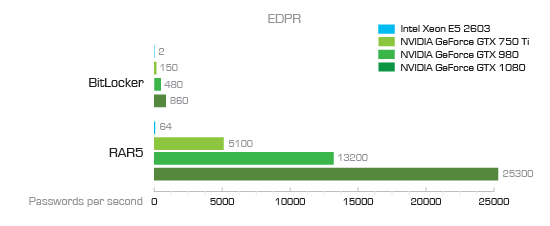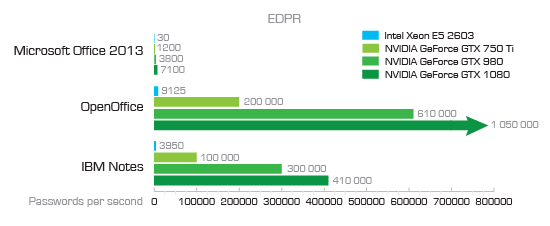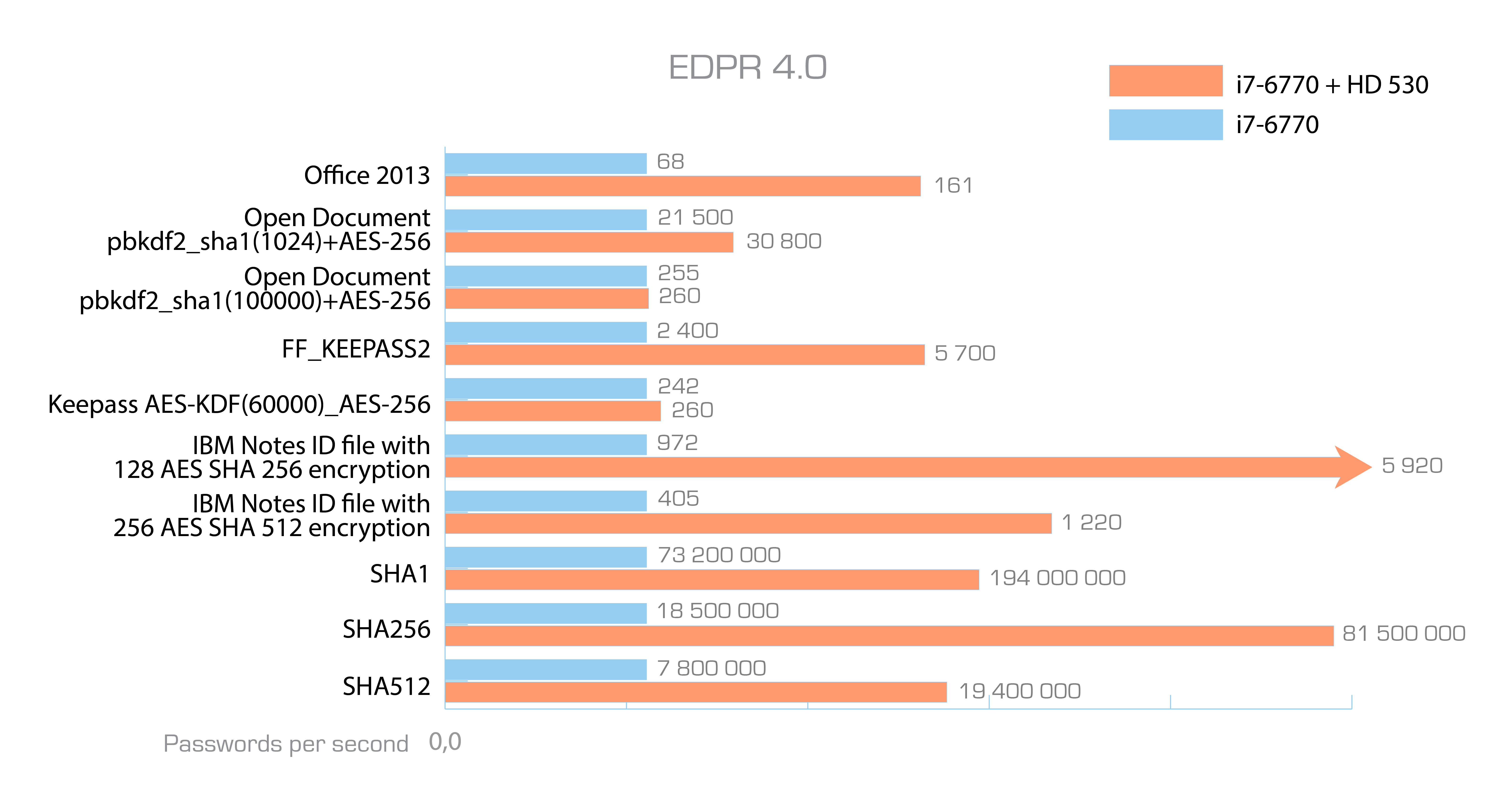GPU acceleration is the thing when you need to break a password. Whether you use brute force, a dictionary of common words or a highly customized dictionary comprised of the user’s existed passwords pulled from their Web browser, extracted from their smartphone or downloaded from the cloud, sheer performance is what you need to make the job done in reasonable time.
Making use of the GPU cores of today’s high-performance video cards is not something one can ignore. A single video card such as an NVIDIA GTX 1080 offers 50 to 400 times the performance of a high-end, multi-core Intel CPU on some specific tasks – which include calculations of cryptographic operations required to break encryption and brute-force passwords. The benefits are very real:


But what if you don’t have immediate access to a computer with a dedicated high-end video card? What if you are working in the field and using a laptop with its video output handled by Intel’s built-in graphic chip?
We have good news for you: you can use that built-in Intel chip to speed up password attacks. Granted, a power-sipping Intel chip won’t give you as much performance as a dedicated board dissipating 200W of heat, but that extra performance will literally cost you nothing. Besides, many ElcomSoft tools such as Elcomsoft Distributed Password Recovery will simply add that extra GPU chip to the list of available hardware resources, effectively squeezing the last bit of performance from your PC.
Intel GPU: Performance
What kind of performance boost can one expect with an Intel GPU? The short answer is your attacks will be two to three times faster when running on an “average” Intel CPU and utilizing the built-in Intel graphics processing units compared to using the CPU alone. The long answer… it depends. The exact performance gain depends largely on which particular Intel processor we’re talking about, and particularly on the Intel graphic processing unit built into that CPU. Through several generations of processors, Intel used HD Graphics, Iris Graphics and Iris Pro Graphics performing very different in benchmarks.
Let us take, for example, some Intel graphics units featured in the Skylake generation of CPUs. Built on the 14nm architecture, Skylake-based CPUs can be supplied with HD Graphics 510, 515, 530, P530, Iris Graphics 540, 550, and Iris Pro Graphics 580 and P580. The units’ theoretical performance ranges all the way from 173 GFLOPS (Intel HD Graphics 510) to 1152 GFLOPS (Intel Iris Pro Graphics P580).
In real life, the advantage you get by utilizing the GPU cores will always be less than the theoretical maximum. Speaking of password recovery, the “GPU gain” is highly dependent on the data format being attacked. Some formats are naturally better suited for highly parallel attacks, while others demonstrate minimal performance gain from the parallelism of GPU computations. We tested the performance of various Intel GPU’s with Elcomsoft Distributed Password Recovery 4.0, and received the following results:

(Note: we’ve used Intel i7-6770 for these benchmarks since the Xeon E5 we’re routinely benchmarking does not come with a built-in GPU).
How do Intel GPU’s fare against competition? For information, we will refer to this comparison of Intel graphics processing units; for the purpose of comparing their theoretical performance with other makes GPUs, we’ll use the GPU GFLOPS table.
Sitting near the top of Intel’s high-performance graphics, the Intel Iris Pro Graphics 580 (featured in Intel Core i7-6970HQ and similar processors) offers 1152 TFLOPS of performance. This performance loosely matches the performance of a dedicated GeForce 945M board based on the Maxwell architecture. The venerable NVIDIA GeForce GTX 1080 Ti is nearly 10 times faster with about 10609 GFLOPS.
However, if you are using a mainstream CPU, you are much more likely to have a much different GPU. With its 345 GFLOPS, Intel HD Graphics 530 found in mainstream Intel Core i7-6700 processors offers just about one-third the performance of its high-end counterpart, which is nearly 30 times slower compared to NVIDIA GeForce GTX 1080 Ti.
Conclusion
Does utilizing Intel graphic processing units still make sense? We believe you cannot go wrong with the extra performance, no matter where it comes from. If your computer is equipped with an Intel CPU, make sure to utilize the GPU cores to speed up your password recovery attacks. ElcomSoft products featuring Intel GPU support include Elcomsoft Distributed Password Recovery 4.0 (and newer); other GPU-accelerated recovery tools will be updated with Intel GPU support in near future.





